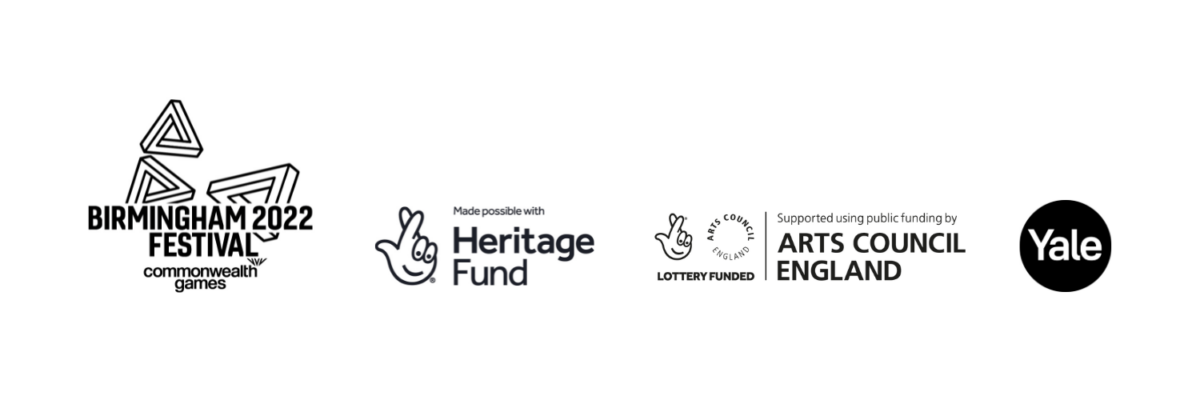
Birmingham 2022 Festival presents
Key to the City
Paul Ramírez Jonas
Proudly sponsored by Yale
28 May – 7 August 2022
Locations across Birmingham and Solihull
What if anyone could decide who has freedom to the city?
What if everyone, not just the chosen few, could be recognised with the Key to the City of Birmingham?
What if this Key could open dozens of spaces around the city?
And what if all those spaces together created a portrait of Birmingham?
Key to the City was a project that turned all these “what ifs” into reality. During the summer of 2022 anyone was able to award the Key to the City to whomever they wanted, for whatever reason they wanted. No background checks necessary, all previous sins overlooked, and all doors unlocked. For a limited time, 15,000 key holders were able to explore private and intriguing places and spaces that they might not have happened on before – bringing a new perspective to the city.
Explore some of the incredible images shared by participants on Instagram and Twitter using #KeyToTheCityBrum.

About the Project
Paul Ramirez’s Key to The City in New York (2010) was a citywide intervention in which twenty-five thousand keys to private or normally inaccessible spaces throughout New York City were bestowed on certain individuals in a special ceremony, revealing that culture can still be a freely shared experience, while also highlighting the increasing privatisation of urban space.
Artist Biography
Paul Ramírez Jonas was born in 1965 in Pomona, California, and raised in Honduras. He earned a BA in studio art from Brown University (1987) and an MFA in painting from Rhode Island School of Design, Providence (1989).
Ramírez Jonas’s work ranges from large-scale public installation and monumental sculpture to intimate performance, video, and drawing, and traces the universal aspiration to an elusive perfect world. From driving west in pursuit of the sunset (Longer Day, 1997), to recreating failed flying machines (various projects, 1993–94) and transcribing the communications of the Apollo space mission (Men on the Moon, Tranquility, 1990– ), his practice is characterised by a bracing, albeit nostalgic, idealism rooted in a faith in human resilience. Sensitive to the processes of globalisation, he reveals its simultaneous tendencies towards interdependence and exclusion.
Exploring the parallels between various public gathering spaces, Ramírez Jonas’s drawing series Admit One (2010–13) and Assembly (2013) chart a typology of assembly halls, churches, cinemas, stadiums, and theaters that underscore the fundamental nature of the human need for connection. In The Commons (2011) and Ventriloquist (2013), the artist revived the monument (here the equestrian statue and the portrait bust, respectively) as a vehicle for communication by replacing the form’s immutable granite or marble with cork—a material that is both degradable and the traditional medium of community noticeboards.
Key to the City (2010) was a citywide intervention in which twenty-five thousand keys to private or normally inaccessible spaces throughout New York City were bestowed on certain individuals in a special ceremony, revealing that culture can still be a freely shared experience, while also highlighting the increasing privatization of urban space.
Ramírez Jonas has had solo exhibitions at Artists Space, New York (1990); White Columns, New York (1992); Jack S. Blanton Museum of Art, Austin, Texas (2007); Aldrich Contemporary Art Museum, Ridgefield, Connecticut (2008); and the Pinacoteca do Estado, São Paulo (2011). Selected group exhibitions include Fluxus Attitudes, New Museum of Contemporary Art, New York (1992); inSite_05, San Diego and Tijuana (2005); The Quick and the Dead, Walker Art Center, Minneapolis (2009); Barely There (Part II), Museum of Contemporary Art, Detroit (2011); Caribbean: Crossroads of the World, El Museo del Barrio, New York (2012); and Shine a Light 2013, Portland Art Museum (2013). He has also taken part in the Johannesburg Biennial (1995); Seoul Biennial (2000); Shanghai Biennial (2006); São Paulo Biennial (2008); and Venice Biennale (2009). His honors include grants from the National Endowment for the Arts (1991), Art Matters Foundation (2009), and Joan Mitchell Foundation (2009), as well as a Howard Foundation Fellowship (2009).
He is Professor and Chair of the Department of Art at Cornell University College of Architecture, Art, and Planning (AAP).
Ramírez Jonas lives and works in New York.



